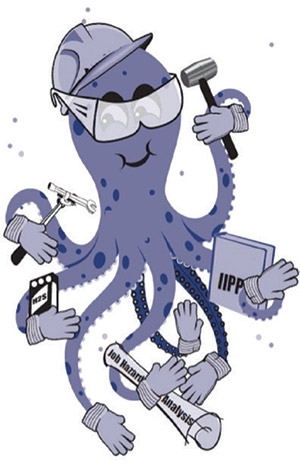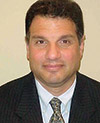The Campbell Institute: Successful safety through worker ownership

The Campbell Institute at the National Safety Council is the EHS center of excellence. Built on the belief that EHS is at the core of business vitality, the Institute seeks to help organizations, of all sizes and sectors, achieve and sustain excellence. Learn more at the Campbell Institute website.
Successful safety management systems work toward achieving a safe and incident-free working environment. Observations, culture, training, metrics and management support are key influences used by HSE professionals to attain and then maintain this goal. And yet, another key ingredient needs to be a constant in the safe worksite equation – our workers.
Workers are strategic to safety because whatever is devised within ivory towers must then be accepted and implemented in the field. And effective implementation is only as good as those driving it on the line, day in and day out. When workers are included and, more importantly, made part of the safety solution, program success is usually a predictable result. I was lucky to learn this fact early in my career and would like to relay a simple yet impactful example of engagement.
Some 15 years ago, while overseeing safety for an industrial maintenance company working primarily in the petrochemical field, I was confronted with an alarming statistic: Although our more than 600 craftspersons worked safely, statistics showed that 40 percent of our recordable injuries were hand-related.
Coming up with a solution to address this companywide trend proved challenging. Our team tried everything but came up empty. We had courses and toolbox talks, as well as all the programs, yet something was still missing. One morning, a colleague, hearing the exasperation in my voice, mentioned the idea of raising hand safety awareness through an internal program – one developed and led by our workers.
Willing at this point to give any rational idea a try, I continued listening. He suggested we hold a poster contest aimed at tackling our dilemma. I liked the idea but had concerns that an aging workforce would be hard-pressed to find the time or interest in drawing a poster. He had a twist: What better way to share safety engagement than by having their families compete?
Based on his suggestion, we opened the contest up to workers’ children, grandchildren, nieces and nephews younger than 16. The rules went out the following Friday. The very next week, we began receiving submissions at our corporate office. At first we had only a handful, but soon the mailman began dropping off bound bundles – the look on his face begging for the contest to end. We pored through each and every submission, and after lots of discussion came up with the top three.

The winner was Angela, a 14-year-old girl in Ponca City, OK, whose idea was Handy Dan – an octopus who wore all the proper PPE and carried a Job Hazard Analysis and an employee handbook. As promised in the rules, we agreed not to change or edit any of the entries. The winning poster was made into giant 16' x 10' banners and proudly hung outside of each of our jobsite trailers.
Our crews took a lot of ribbing over their new mascot, who was various shades of purple, but to this day I’d bet that each person knows what Handy Dan stands for. And it was our company who got the last laugh: Hand-related recordable injuries dropped by more than half in the following six months. Coincidence? I think not.
I learned that if we’re all part of the solution, everyone is more receptive to the outcome and will work harder to make their efforts a success.
I owe a debt of gratitude to a young girl and a purple octopus. Thank you both.
This article represents the views of the author and should not be construed as a National Safety Council endorsement.
 Richard Cerenzio serves as the Corporate HSE director at ISN, a member of the Campbell Institute at the National Safety Council. Prior to joining ISN, Cerenzio spent more than 24 years as a global senior manager in HSEQ within various industries. His industry outreach includes numerous global industry conference presentations and panel mediations. He also has authored many industry-specific articles both in the United States and abroad.
Richard Cerenzio serves as the Corporate HSE director at ISN, a member of the Campbell Institute at the National Safety Council. Prior to joining ISN, Cerenzio spent more than 24 years as a global senior manager in HSEQ within various industries. His industry outreach includes numerous global industry conference presentations and panel mediations. He also has authored many industry-specific articles both in the United States and abroad.
Direct to your inbox: Sign up to be notified in email about new Campbell Institute columns.
Post a comment to this article
Safety+Health welcomes comments that promote respectful dialogue. Please stay on topic. Comments that contain personal attacks, profanity or abusive language – or those aggressively promoting products or services – will be removed. We reserve the right to determine which comments violate our comment policy. (Anonymous comments are welcome; merely skip the “name” field in the comment box. An email address is required but will not be included with your comment.)

